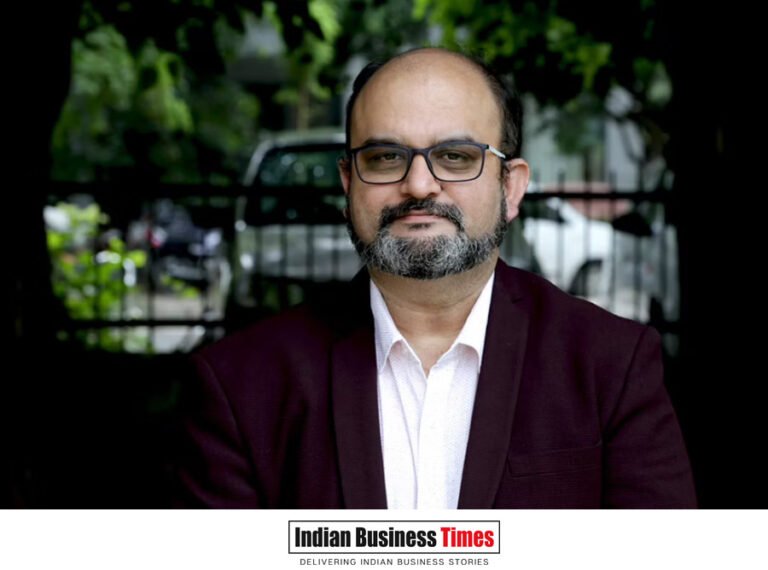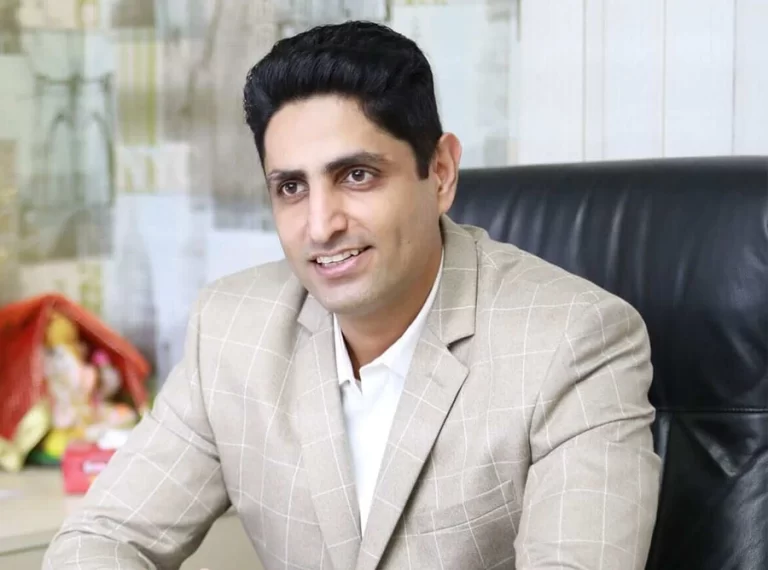Meet The Founder Of Omnipresent, Aakash Sinha; The Man Who Aided India To Reach The Moon!
In an exclusive interview with Indian Business Times, the CEO and Founder of Omnipresent, Aakash Sinha, takes us through his momentous journey and elaborates on the wide scale use of drones technology in India and worldwide.
Regarded as one of the pioneers in robotics and drone technology in India, Omnipresent Robot Tech was established in 2009 with a vision encapsulating the potential of drone technology in the country. In an exclusive interview with Indian Business Times, the Founder and CEO of Omnipresent, Aakash Sinha, takes us through his momentous journey.
He has a technical background with MS in Robotics from Carnegie Mellon University in the US. To apply his knowledge and gain some experience with research, he took on the roles of Research Scholar and Robotics Research Scientist at Lockhead Martin, which is a company active in the Aerospace Technology space. Being fascinated by robots, he, then joined another American firm, iRobot Corporation which designs and builds consumer robots.
It was post this experience that he decided to take the plunge and establish his own firm under the moniker, Omnipresent Robot Tech in 2009. The idea was to make robots, which was his area of expertise by then, into flying drones for applications that the world would witness only after a few years. Starting from there, to being the man to develop software for the mighty Chandrayaan – 2, Aakash Sinha and Omnipresent have surely come a long way. During this interview, Sinha elaborates what Omnipresent does, what are the potential areas of applications that are yet to be explored and some valuable tips for all the budding entrepreneurs out there sitting on the fence. So, without any further ado, let us get into this adventurous journey which is bound to get you motivated to follow your dreams as well.
“This kind of technology (Drone Technology) is something that people call disruptive technology. It has the potential to fundamentally change the way life, business and work are conducted.” – Aakash Sinha told Indian Business Times.
Humble Beginnings
The first (of many) landmark achievements that came Omnipresent’s way was the application in one of India’s largest oil refineries. Aakash Sinha demonstrated the use of a drone to monitor the defects and real-time parameters in the refinery which was done manually prior to that. The problems with that were the risk of life (because a person had to climb on the towers without any dedicated safety equipment) and heavy dependence on the data provided by that individual. Now, as one could imagine, the room for human error and inaccurate reading or information is very high in such situations. The drone technology solved these problems by being unbiased messengers which relayed the real-time images and information about the situation of the components and monitor everything. Resultantly, the drones were able to bring forth the issues that even the refinery personnel were unaware of. Realizing the immense value of drone technology, Omnipresent bagged its first project with the oil refinery and never looked back.
“Won’t be surprised to see the consumer drone market flourish where everyone might own a personal drone just the way they carry their mobile phones. It could be their companion on a solo trip to click selfies, record videos and capture the moments on a vacation.”
Current Applications
Arguably the most prestigious project undertaken by Omnipresent was developing the software for creating 3D images from a regular pair of images by Chandrayaan – 2 through its Rover, Pragyaan to map out the surface of the moon. This helps the Rover to navigate its way around the obstacles and generate a 3D model of the terrain of the lunar landscape. By creating this model, it became easier to simulate the Rover and enable movement from earth remotely. The very same rover is being sent with Chandrayaan – 3 with a comprehensive tech support from Omnipresent. Evidently, it is an ambitious project and reflects the company’s vision to create something affordable and simple but effective.
Apart from this ground-breaking concept, the drones and robots from Omnipresent find usage in surveying, surveillance and inspection in large industrial establishments. The biggest industrial giants in India including Reliance, Adani and Aditya Birla Group reap the benefits of these services. Furthermore, Omnipresent has already secured projects from 6 State Governments in the areas of mapping, surveying and other sectors after having realised the potential of drone technology. The amount of cost and time saving through the use of drones is simply unparalleled and almost unthinkable just a decade ago. The other prominent services of Omnipresent entail cleansing of water bodies, enabling remote services during the Covid times, IOT (Internet of Things) based video analytics for vivid and sharp videos and images from the sites where drones are used, precision agriculture for spraying the right amounts of insecticides, pesticides, fertilizers and irrigation using drones and robots, detecting a failure in a crop to ensure quick corrective response.
“I see drones as flying robots. They can move by themselves and sense their surroundings. According to the situation, they can react as well. There was a tremendous need in India for something like that back when I started Omnipresent in 2009 and not a lot of people were doing it.”
Future Potential
The future prospects of drone technology are undeniably massive. As a matter of fact, we are at that stage of evolution of this technology that we can’t fathom the full-scale utilization of this technology. If you think we are exaggerating, consider the example of something we have all lived through, the Internet. Back in 1983, when the Internet is believed to be invented, could anyone have ever thought that it could allow us to watch someone a thousand miles away or get you anything you wish right at your doorstep? Even after almost 4 decades of the Internet, we are finding new applications. The drone technology is merely a decade old and the future is beyond comprehension.
However, we could see where it is headed and what the plans are for the next few years. In a few years’ time, drones will be used extensively for food and parcel deliveries, e-commerce and fast commerce, drone taxis which can cover hundreds of kilometres, mapping which would be used to measure every centimetre of ground in India and have the digital information available in any part of the country, complete overhaul in the drone-based agriculture which employs over half of country’s population, industrial assessments like communication towers, power lines, factory chimneys, cooling towers, surveying and constructing roads and highways as announced by the NHAI (Nation Highway Authority of India), Railway track maintenance, defence arsenal, passenger carriers for inter-city commute and much more.
The idea is to bring transparency for everyone involved so that the overall efficiency could be enhanced significantly. For the tech savvy, Omnipresent envisions that the most relevant future drone technology would be something known as the “Drone Nerve Center”. This could enable virtually any number of drones to be connected to a central headquarters to send and receive data and initiate the desired actions. Again, this software has been used in Pragyaan, the rover of Chandrayaan – 2, for perception and navigation. “All these are areas which we already know about and the trials have also begun in a few of these” – Aakash Sinha is confident that there will be at least 2 or 3 unicorns from this field in the immediate future and Omnipresent will be one of them. To put it simply, the possibilities are infinite.
“Not a lot of people know this, but Agriculture is a sector which will be highly driven by drones in a few years’ time. Over 50% of the Indian population finds employment in agriculture. Drones will be able to release adequate amounts of pesticides and diagnose problems in the crops timely, thereby cutting down input cost and boosting agriculture yield upto 20%.”
Commercial Drone Technology Requirements
Beginning to be used much more extensively, the Government realizes the potential and relevance of promoting drone technology in India. Consequently, the Govt. has announced a few relaxations to this formerly tightly restricted and regulated space. This has proven to be a boon to the companies in this space. The DGCA (Directorate General of Civil Aviation) has over 300 designated “green zones” where even the large drone (max weight 500 kg) would not require any permission to fly unto 400ft. In these areas, even long-range drone flights, night operations, variable payloads, deliveries and spraying are permitted. The “yellow zones” would require an automated permission to fly unto 200ft keeping 12 km away from the installations and airports. Furthermore, the drone weighing less than 250 g will not even require NPNT (No Permission No Takeoff) from the DGCA or the Government. Drone heavier than 2 kg would require a government-trained pilot but going forward, the Govt. might grant exemptions from these regulations on a case-by-case basis. Aakash Sinha has applied himself tirelessly to receive all the certificates and licenses to fly the drones legally in India.
“We must laud the Government for the visionary policy relaxations to allow drone industry to grow exponentially. From being a heavily regulated space, the drone industry has become almost self-regulatory. This decision will attract myriad new investors to this sector”.
Valuable Lessons for Upcoming Entrepreneurs
It is not every day that one gets the guidance of someone for free, who has achieved so much in his field of expertise. We recommend you make the most of it by trying to apply these words of wisdom by the man himself. During the interview, when asked about how an entrepreneur should go about building his business, handle the company/products and tackle the investors, Aakash Sinha had the following gems to share.
- An entrepreneur should not be passionate about the product blindly, but must have some actual data to ensure that the idea he is investing his time and resources in, has a chance to become successful.
- An entrepreneur must relentlessly focus on improving his/her product or services every single day.
- One must always look for the right investor and not anybody who is willing to throw his/her money around.
- Ideally, the vision of the company must align well with the investors to achieve maximum potency.
- Chase the big dreams but don’t think that you will always succeed, also be prepared for failures. Constant learning from failures are the stepping stones to big success.
“The future of drone technology lies in the software. With new requirements, you will relentlessly need to keep updating the software for drones. If you are someone who is interested in software programming, the drone industry is bound to be the future-proof space, especially in India” – Concludes Aakash Sinha.
Also read: Drones Industry gets new regulations: A Look at the Future Flight Path.









